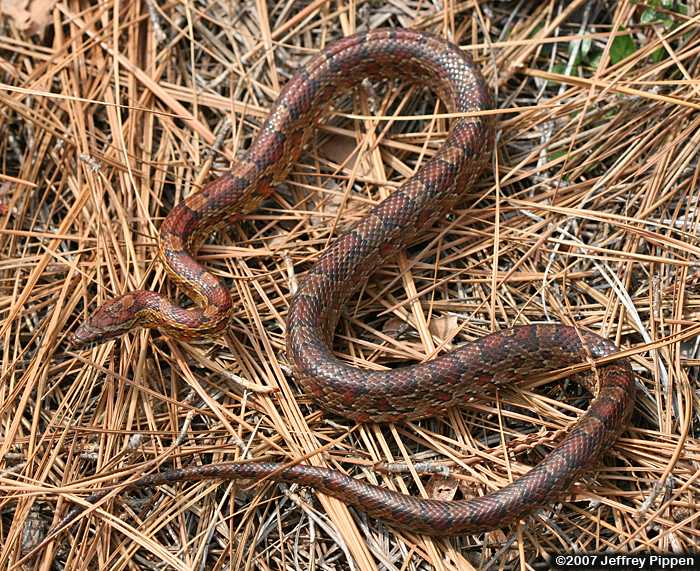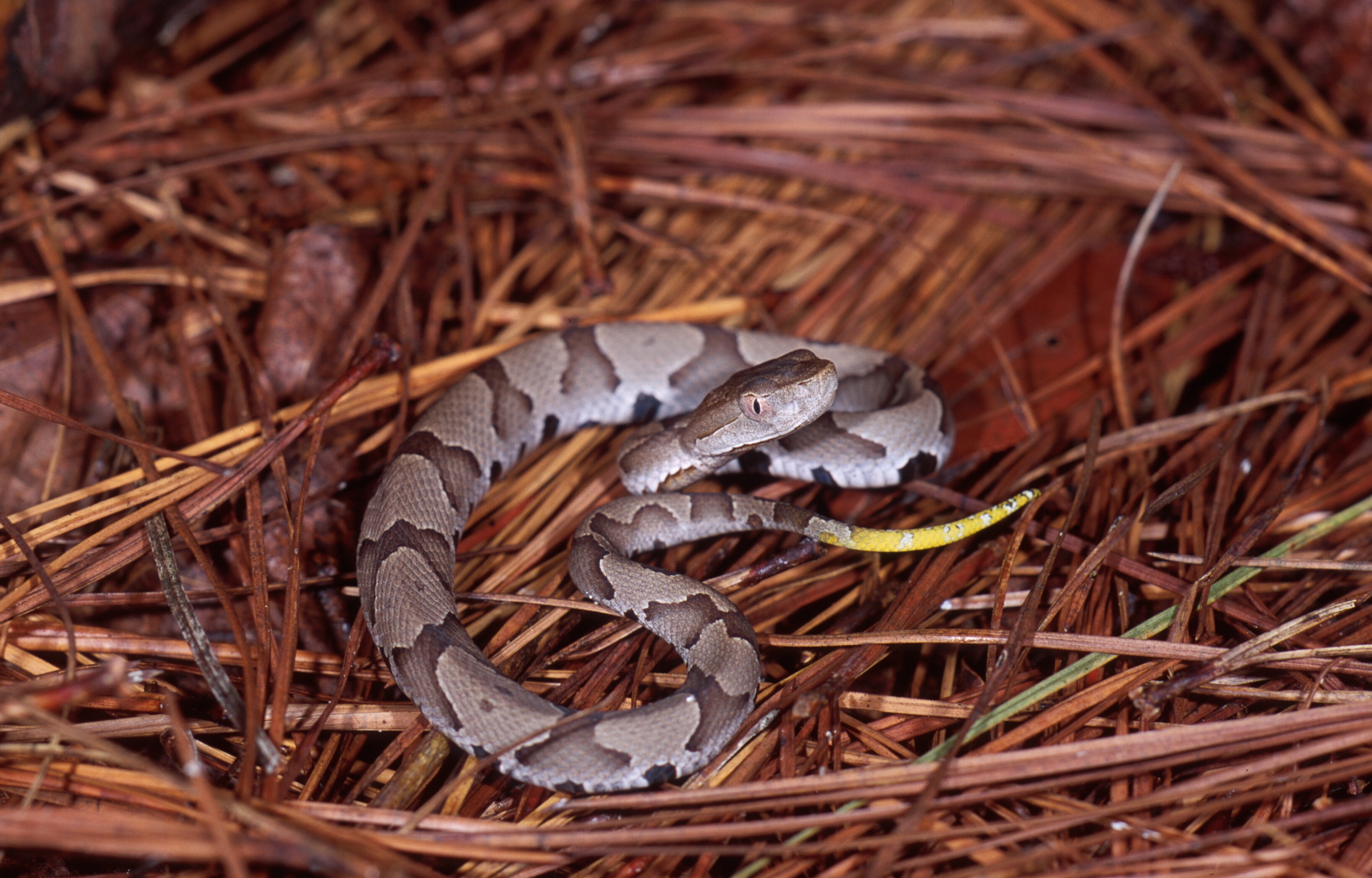In this blog I will continue my series on North Carolina's venomous snakes to help you better understand them and hopefully, identify them on your own. Most of the photos in this blog were taken by a few friends and I would like to say thank you to them for the use of their photos.
Let us begin, shall we?
I first would like to test your knowledge. See if you can identify the Copperhead (no scrolling down and peeking)
 |
| Photo from Internet |
 |
| Photo by ME. |
 |
| Photo taken off Internet |
So, Copperheads, like Cottonmouths are in the Pit Viper family. What distinguishes them is that they have fangs in the front of their mouth that are move able. These fangs according to Snakes of The Southeast by Whit Gibbons and Mike Dorcas "Fold up against the roof of the mouth when not in use." Another trait, is that between their eyes and nostrils, they have another pair of holes called pits. Gibbons and Dorcas. These pits are used like heat sensors; they detect the heat from the body of mammals which makes up a part of their diet.
 |
| Though this snake is Not a Copperhead, it is a Pit Viper. The hole between the nose and eye is the pit. Photo by Katherine J. Photography. |
 |
| Copperhead. Photo by Adrian Yirka |
That being said, Copperheads do eat mammals as well as other reptiles, amphibians, and birds when opportunities present themselves.They primarily ambush their prey, but sometimes will forage for food. The babies ( called neonates) have a lime-green to a yellow-colored tail ( pictured below) they will wiggle it and lure in prey ( mostly lizards and frogs).
 |
| Copperhead eating a Cicada. Photo by ME. |
In the Piedmont region, The copperhead is the most common venomous snake. Cottonmouths have been found in Wake County, but are considered rare. Timber Rattlesnakes are found in a few places, but are uncommon to rare. They have historically been found in Durham, but I can not say for sure if they are still there.
 |
| Copperhead. Photo by ME. |
 |
| Neonate copperhead. Note the yellow-green tail. Photo from herpsofnc.org |
| Range of Copperhead in NC. Photo from herpsofnc.org |
As their name suggests, they are a coppery color and can be found in various habitats that provide plenty of hiding places, food sources, and water. Copperheads are most active at night, but can sometimes be encountered basking during the day. They can be quite difficult to see as they blend in perfectly with the leaves and other debris common to the areas they like to hang out at. They rely on this camouflage to remain hidden from prey they ambush and from predators that would eat them.
 |
| Copperhead. Photo by Adrian Yirka |
In regards to Copperheads and their venom, they generally blend in so well with their surroundings, they are not seen until they are stepped on. They rely a lot on not being seen to avoid becoming a meal. Despite the fear and misunderstanding of them, they are not out to get people and are not super aggressive. That being said, they still will bite if they feel threatened, provoked, and are stepped on. Often bites occur when people are out in their yard at dusk and are not watching where they are putting their hands and/or feet.
Copperhead bites are " although rarely if ever fatal to humans, are serious and should receive prompt medical attention." Amphibians and Reptiles of the Carolinas and Virgina
by Jeffrey C. Bean, Alvin L. Braswell, et al.
Therefore, it would be a good idea to know how to identify a copperhead, especially if you live in wooded areas. Here are some good clues you can use without having to get too close:
1. Copperheads are a coppery color.
2. Look on the pattern; they have a band pattern shape that I have heard some people describe as Hershey kisses, horse saddle, and even described as an hour glass.
| P |
 |
| Note the "Hershey's Kiss" pattern. Photo by Adrian Yirka |
Now that you the reader have an basic understanding on how to identify a Copperhead, I will now briefly share a few non-venomous snakes that they are often confused with.
 |
| Mole Kingsnake. Photo from Internet |
Mole Kingsnake: These guys are not well heard about snakes and this could very well be your first time hearing of them. They like similar habitats to copperheads; in particular, open fields and forested areas. These snakes will eat other snakes in addition to small mammals and other small critters. The pattern is a good way of distinguishing this snake from a copperhead.This snake lacks the "Hershey Kiss" band pattern. There is a difference in the coloration of the snake too.

Corn Snake: These snakes are one of the most commonly kept as pets and are well known. Sadly, these guys are often killed for appearing to be a copperhead. They like similar habitats to copperheads, though they are more happy in sandhill-like places. Again, look at the pattern to differentiate them from copperheads. Coloration can be a factor as well, as corn snakes can be all sorts of colors.
As I conclude this blog on Copperheads, I surely hope you have learn something as is my hope for all my blogs that people read. I hope you have learned to identify a copperhead and a few non-venomous snakes that is often mistaken for it. If you have an questions, feel free to ask me, I would be happy to help in any way I can.
Also, a big thank you to Adrian Yirka for allowing me to use a few of his photos. He his passionate about herpetology and many things of the outdoors, He has be involved at the NC Museum of Natural Sciences for many years.
 |
| Photo by ME. |
No comments:
Post a Comment